Last Updated on August 22, 2025 by Muhamed Elmesery
Microbiology is a branch of science that deals with the study of microorganisms like bacteria, viruses, fungi and other protozoa. It also includes their interactions with each other and the environment. To study microbiology well, we need a special laboratory which is called “Microbiology Lab”.
In this blog, you will learn and understand more about microbiology lab safety rules, microbiology lab instruments, quality control in microbiology lab and how to write a microbiology lab report.
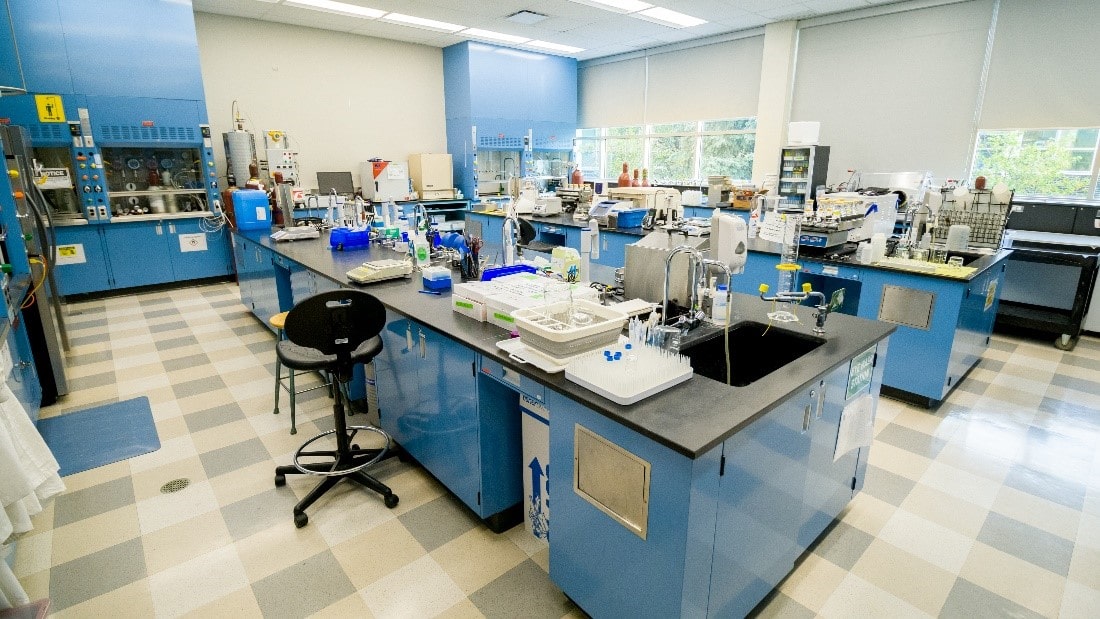
Table of Contents
What is a Microbiology Lab?
Microbiology lab is a specialized laboratory designed for conducting experiments and researches on microorganisms such as bacteria, fungi, viruses, algae and protozoa. This type of laboratory is equipped with specialized tools and equipment to handle microorganisms safely, as well as sterile environments and containment systems to prevent the spread of infection and infectious agents.
Microbiology labs are used for a variety of important purposes such as unknown microorganisms identification, testing the effectiveness of antibiotics, vaccines development and researching the genetic makeup of microorganisms.
The work done in microbiology labs is critical for understanding and combating infectious diseases, as well as advancing scientific knowledge and developing new technologies in fields such as biotechnology, nanotechnology, agriculture and environmental science. Microbiology labs are also essential and vital in clinical settings, where they play a crucial role in diagnosing and treating patients with infectious diseases.
Microbiology Lab Safety Rules
The microbiology lab is considered as a controlled environment to prevent contamination, Students must adhere to safety measures in the microbiology lab as well as common sense when working in the lab. Understanding these precautionary steps will help you avoid accidents and injuries while performing your experiments.
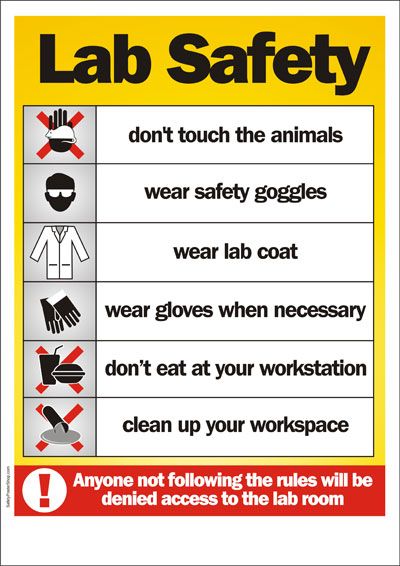
Now we will show the most important microbiology lab safety rules:
- Make sure that you wash your hands with disinfectant soap when you arrive at the lab and also before leaving.
- Wash your hands before and after wearing the disposable gloves.
- Keep the workspace clear, decontaminated and free of any unnecessary materials.
- Always wear your laboratory personal protective equipment when dealing with any biological material like gloves, safety goggles, closed toed shoes and the laboratory coat to prevent bio-hazardous materials from contact with the eyes and skin.
- Disinfect the work area and sterilize all the needed equipment before beginning any work.
- To avoid culture contamination, make sure that you:
- Don’t open biological cultures in the laboratory (unless within a certified).
- Don’t leave any culture or vessel.
- Treat all human and animal fluids, cells, tissues, blood and organs as infectious agents and they should be handled carefully.
- Dispose of any used tools like needles, blades or broken glass in the sharps containers.
- In case of biohazardous waste, make sure to dispose of it in accordance with TRU policies.
- Eating, drinking, chewing gum and smoking is prohibited in the laboratory.
- In case of accidents or exposure to infectious materials, it must be reported immediately.
- Make sure that Equipment is decontaminated before removal from the laboratory for service or repair.
- Practice aseptic technique in microbiology in a clean work area with supplied disinfectant before work initiation and upon completion.
- Don’t forget to review the relevant SDS and PSDS associated with the intended activity before beginning the work and keep them close for quick reference.
- Plants and animals that are not associated with the projects must not be permitted in the laboratory.
- In case of any procedures like the biological material manipulation that could generate an aerosol, they should be done within a biosafety cabinet (BSC).
- In the biosafety cabinet (BSC), don’t use an open flame and any materials that are removed from inside the cabinet should be surface-decontaminated with 70% isopropyl alcohol.
- In case of using infectious agents in a laboratory, a biohazard warning sign incorporating the universal biohazard symbol must be posted on the work area.
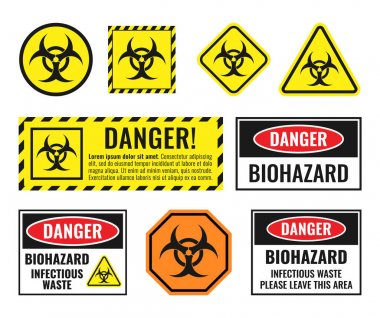
The previous biohazard signs are very important to keep people safe by:
- Preventing inhalation of or exposure to dangerous materials.
- Educating people about the potential biological danger, the correct safety precautions and quality control in microbiology lab to follow.
Biohazard signs label dangerous areas, waste, evidence, labs and any place where biological material, pathogens or animals could be found. Without signs, people would not be aware enough of the potentially dangerous areas.
PraxiLabs provides microbiology virtual labs to students and educators that include a set of hands-on experiments designed to support students’ understanding of the principles of microbiology.
Microbiology Lab Equipment
The importance of microbiology lab instruments is to help microbiologists conduct their experiments and research. Also the microbiology lab supplies allow them to process, manipulate, and examine various materials in the laboratory with full control over how things are done. The proper use and handling of this equipment is essential for maintaining optimum safety for the students and staff.
Microbiology lab equipment is used in microbiology laboratories to isolate and culture microorganisms, and to apply microbial techniques to improve our understanding of the biology, ecology and pathology of organisms.

The most Popular Instrument Used in Microbiology Lab
In the following table you will find examples of instruments used in microbiology lab including an overview of its main functions:
|
Instrument Name |
Main Function |
Microscope |
A microscope is a device used for viewing organisms that are too small to be seen with the naked eye. Microscopes vary and range from simple hand-held magnifying glasses to the electron microscopes that require special training to use.
|
Autoclave |
The autoclave is a pressurized chamber used for the disinfection and sterilization processes. Its principle depends on the combination of three factors: time, pressure, and steam
|
Centrifuge |
The centrifuge is an instrument that is used to separate substances by density using centrifugal force. It consists of a tube mounted vertically on bearings so that it can spin around its axis at high speed, separating different components depending on their specific gravity. |
| Biosafety cabinets(BSC) | Biosafety cabinets are designed to decrease the risk of infection from personnel working in the lab. They are used in microbial inoculation and isolation studies. They have built in HEPA filters to remove pathogens from air, and prevent them from escaping into the surrounding environment. |
Deep Freezer |
Deep freezer is used for stock cultures storage. It is a device used to store materials like cells, proteins, enzymes or tissues which should be kept at very low temperatures. |
Incubator
|
The incubator is a device that provides the heat necessary for the microorganism growth. It works at different temperatures according to the purpose of the experiment and the workload of the laboratory. It is used in many purposes like multiplying, cultivating, and characterization of microorganisms.
|
pH Meter |
pH meter is used for detection of the pH of the media prior to experiments and to monitor the value of pH during experiments. The device is used in the preparation of stock solutions and the culture media used for the microorganisms growth.
|
Hot Plate |
A hot plate is considered as a tabletop heating system. It produces heat by the electricity flow. It is used over water baths and to heat glassware.
|
Magnetic Stirrer |
Magnetic Stirrer is a device that provides both mixing and keeping the chemical solutions or the mixtures at a certain temperature and time (this is done by the help of the magnetic bar). |
Vortex Mixture |
Vortex Mixture or vortexer agitates or stirs the solutions in the flask or tube in specific duration and speed. |
There are other tools required for microbiology lab experiments such as pipettes, test tubes, trays and Petri dishes. And equipment such as bunsen burner, shakers, colony counter, homogenizer, hot air oven, laminar air flow, spectrophotometer, water bath, water distiller and spectrophotometer.
With PraxiLabs 3D virtual labs students can practice the same experiment of microbiology with online lab for an unlimited number of times, with 0% risk & 100% supervision!
Pick the Best Virtual Plan For You
How to Write a Microbiology Lab Report
A microbiology lab report is an academic paper that describes the results of a series of tests and experiments. The purpose of a microbiology lab report is to describe the test performed and provide a conclusion.
The lab report is mainly consists of eight sections:
- Title.
- Abstract.
- Introduction.
- Methods and materials.
- Results.
- Discussion.
- Conclusion.
- References.
Let’s take a quick look about each section:
Title
The lab report title should describe the experiment clearly, reflect its purpose and what the experiment analyzed.
Ex: “Determination of Water Hardness by Complexometric Titration”
Abstract
Abstract is a summary of the experiment as a whole and should tell the report reader the purpose of the experiment. Abstract is always written last and not all lab reports need or require an abstract.
During writing an abstract, try to answer these questions:
- Why is the experiment conducted? (purpose)
- What problem is being addressed?
- What are the results?
- What is the meaning of the results?
- How is the problem better understood now than before, if at all?
Introduction
The introduction of a lab report describes what is being tested and why, how the experiment was performed and how previous observations relate to this experiment. It also explains why the results are important and how they fit with existing scientific knowledge. Make sure that you write the lab report introduction in your own words.
Methods and Materials
The lab report Methods and Materials section tells the reader how you did the experiment in the rest of the report. The main purpose of this section is to provide a detailed description of how the experiment was conducted, including any controls used and how data were collected or stored. The methods section also describes how all samples were prepared for analysis.
This section should also provide an overview of any equipment, tool, substance or apparatus that is used in the experiment.
Ex: pipette, petri dish, 1.5mg of MgCl, 0.8mg of AgCl
Results
In this section, you will summarize the results of your experiment. You may need to include tables,figures, charts and calculations if these are required for clarity. You should also include sections explaining the limitations of your work and whether it is possible to generalize from your results.
Discussion
In the Discussion section of the lab report, you should synthesize the information from your experiment and provide a brief summary of your findings. The discussion is where you’ll bring together all of the information collected in your report and relate it to what is known about the subject. Make sure that you use your knowledge from previous studies, lab texts and review articles when making comparisons between this study and other similar studies. In case of unexpected results, you should explain why they are unexpected in the discussion part.
Conclusion
The conclusion section is simple. When writing your lab reports conclusion, start by summing up what you learned and explaining how it applies to your future work. You can also explain how the experiment could be improved or why they suggest a particular technique over another. After summarizing these ideas in your lab report conclusion, include a timeline of events and some recommendations for future experiments. Any additional sources of data or information should be referenced here as well. Conclusion should clearly state what was learned and its purpose or importance.
References
In case of using any outside sources to support or explain information, those sources must be cited in the references section of the lab report. The references section may be left out if no outside sources are used.
Microbiology Lab Report Example
Now we will show you microbiology lab report example:
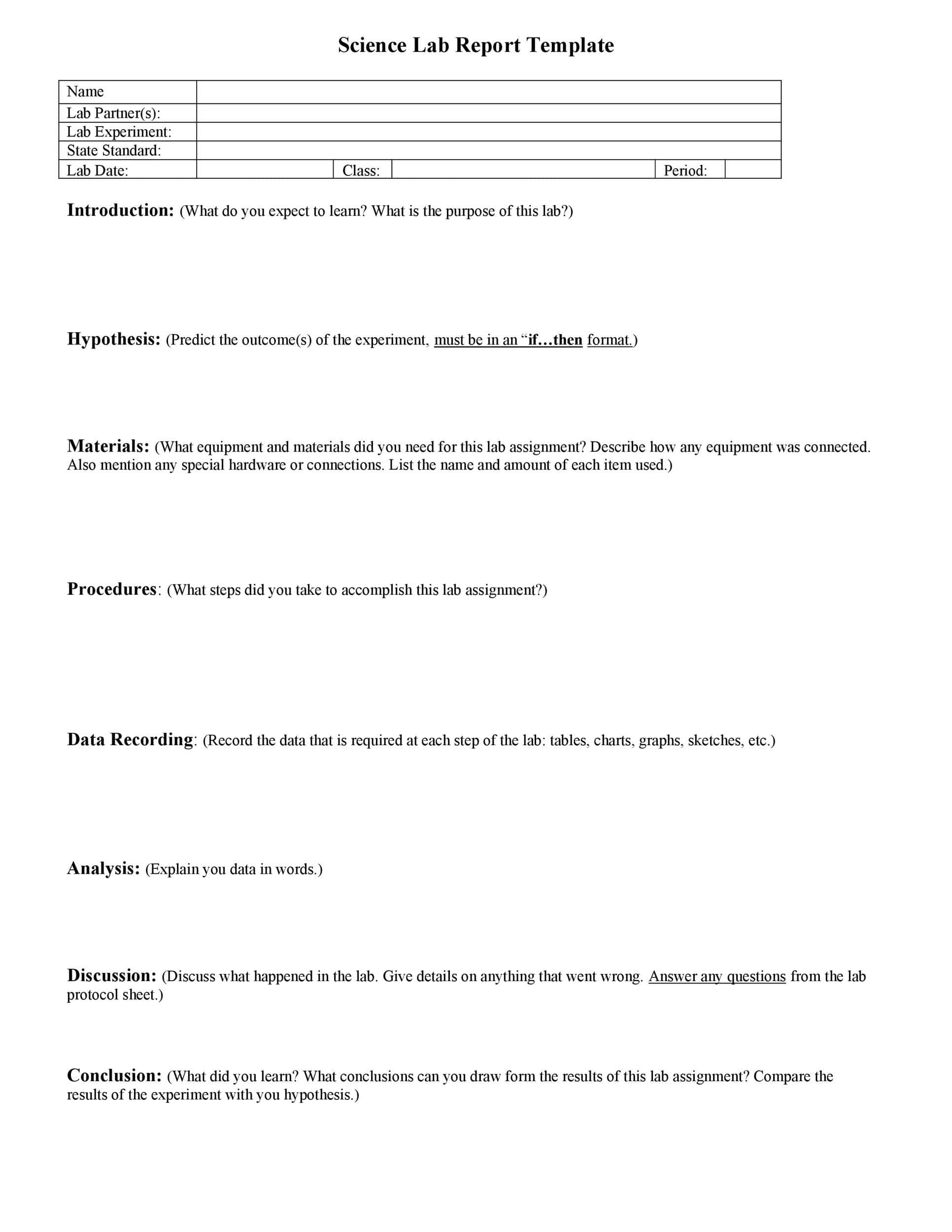
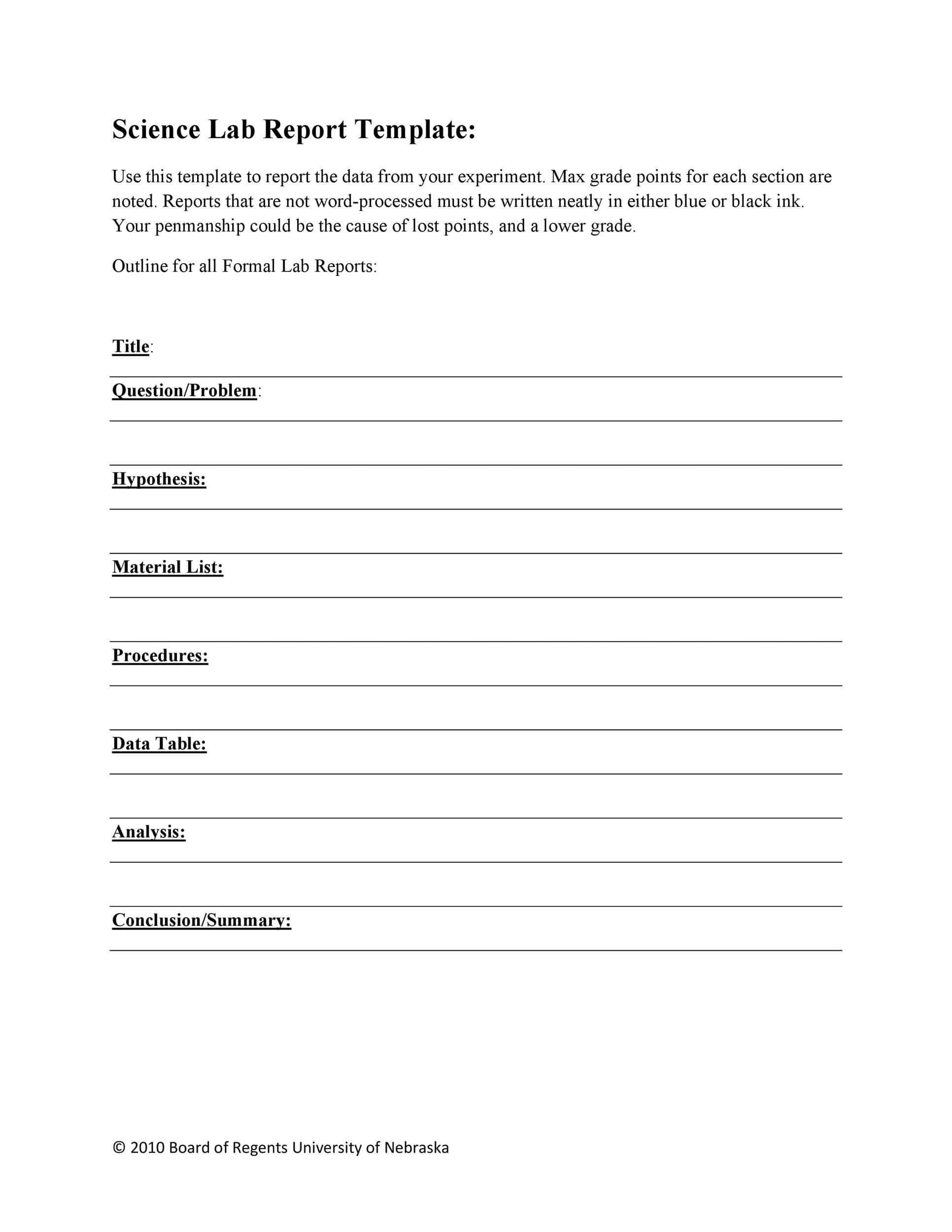
PraxiLabs provides more than 50 virtual biology labs that you can access anytime and anywhere.
 PraxiLabs A virtual world of science
PraxiLabs A virtual world of science






